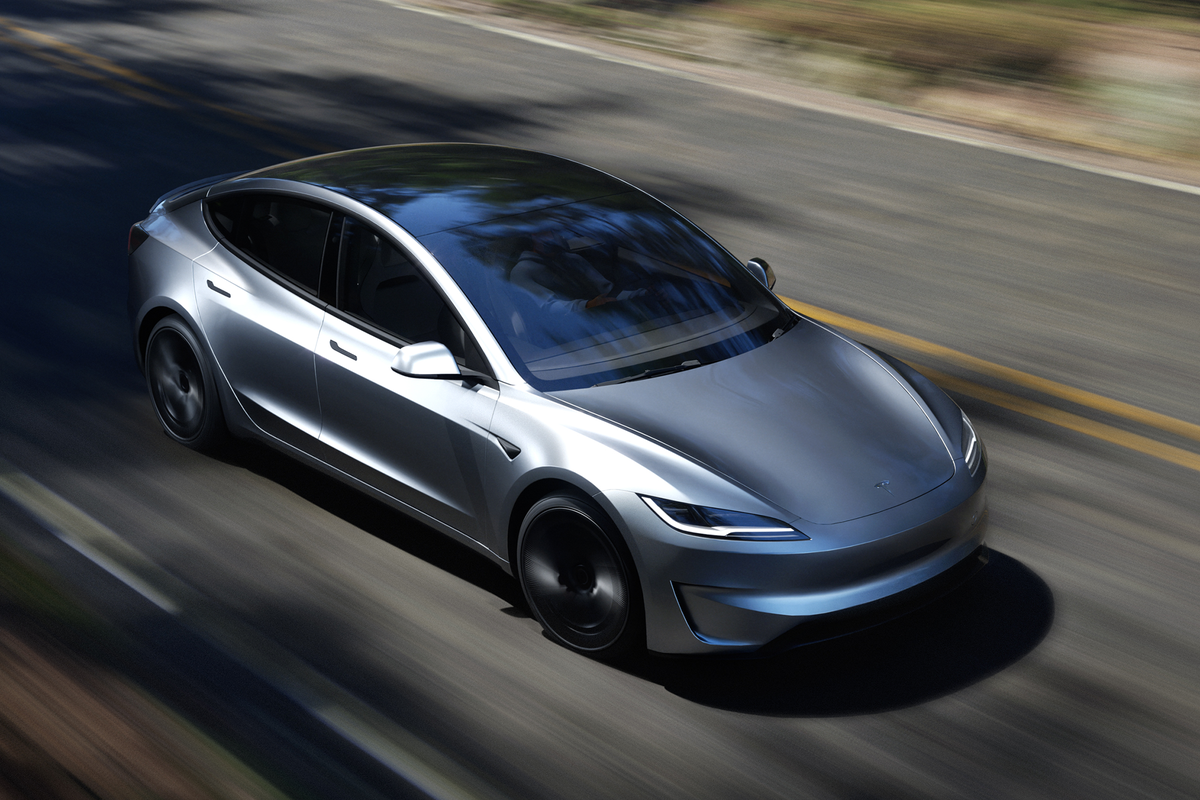Latest News
We’re on the road to fully autonomous cars, but the Tesla trial proves the road is going to be bumpy
Published
6 months agoon
By
admin
Imagine a time where you have your own car, but it doesn’t live with you. Instead, it stays in a car hotel, within easy reach of wherever you might be. All you have to do is summon it when you need it, or AI could predict when you want to travel, and your car miraculously appears, waiting for you at your door.
It’s pretty much how some very lucky, very rich people live now, with their chauffeur ready and waiting with their perfectly polished vehicle ready to whisk them off at a moment’s notice. The future will bring this luxury within the reach of ordinary car owners, and it could be here sooner than we think. Chauffeurs and taxi drivers will be very worried.
Driverless cars are already doing the rounds in certain cities in the US. I saw plenty of them in a trip to Phoenix recently, notably when I was being driven in a Tesla Model Y with the driver sitting with his hands in his lap and the car doing all the work.
I’ve tried it a couple of times from the driving seat myself, both times in a Tesla Cybertruck. You put your destination into the navigation, double tap the right-hand stalk and the car takes over. I’ll admit to being a bit nervous at first, with my feet hovering above the pedals and hands millimetres from the steering wheel.
After a while, though, you learn to trust the system. I just sat there in awe as the big Tesla stopped at traffic lights, negotiated tricky junctions, worked its way through a tricky section of coned-off roadworks and graciously gave way in stop/start traffic.
The Tesla Model 3 (Tesla)Here’s the key, though: I knew it was my responsibility to take over at a moment’s notice. That’s why the Tesla – like most new cars these days – was watching me to make sure I had my eyes on the road. Thankfully it was only my eyes that were being watched, but if my gaze started to wander to my passenger, passers-by, or the giant touchscreen that sits in every Tesla, the system would warn me, threaten to shut down and then ask me to take control. If I didn’t, the car would automatically, and safely, come to a stop.
In short, I knew that my safety, and that of those around me, was my responsibility. We’re not yet at a place where Tesla’s or any other car maker’s driver-selected full-self driving technology is reliable enough not to be overseen by a qualified driver.
It’s also why the driverless taxi rides you can take are only in ring-fenced areas in certain cities around the world. And none in the UKl yet.
However, the UK’s Automated Vehicles Act of 2024 has made way for what the government says is the “safe deployment of automated vehicles”. The government expects trials of fully autonomous vehicles to begin in 2026. Currently in the UK we have what is known as Level Two autonomy out of five levels in total. Ford describes the five stages well:
Level One is Driver Assistance: when the driver is in control of steering, acceleration and braking, while features like Intelligent Adaptive Cruise Control assist can help to reduce stress. Level Two is Advanced Driver Assistance: where the driver stays in control while the system can handle steering, acceleration and braking, with the driver still focusing on the road.Level Three brings Conditional Automation: where automated driving acts as a co-pilot, handling some driving, while you stay ready to assist with complex manoeuvres.Level Four is High Automation: Here autonomous driving enables vehicles to drive independently, with minimal human intervention, letting you divert your attention from the road.Level Five is Full Automation: with vehicles that drive entirely on their own with no human input required.To add a little bit of confusion, there are currently different levels of Level Two automation, with Ford’s BlueCruise allowing drivers to take their hands off the steering wheel while driving on the motorway – or at least 95 per cent of our motorways.
Cameras keep watching to make sure you’re paying attention to the road – as they do with Tesla’s Full Self Driving system. In other cars with Level Two autonomy, you have to always keep your hands on the steering wheel.
The reason the driver must remain responsible and in control of the car is because, as I have found, these systems aren’t yet totally reliable. There’s the occasional blip that means you must take over – for numerous reasons.
Tesla CEO Elon Musk (R) jumps on stage as he joins Donald Trump during a campaign rally (AFP/Getty)I’ve also seen how these systems are improving all the time – and quickly. Talking to owners of Teslas with Full Self Driving in the US, they’ll tell you tales of how the system gets improved with every software update. There’s often additional functionality, behaviour changes in the system that make it behave in a more natural fashion or changes to routes that the car will take – all designed to make for a better, safer experience.
Tesla is currently caught up in a current court case involving a fatality in Florida. Naibel Benavides Leon was killed and her boyfriend, Dillon Angulo, injured when they were hit by their own Chevrolet Tahoe, which had been hit by a Tesla Model S. George McGee was driving a Tesla Model S sedan which went through flashing red lights, a stop sign and a T-intersection at nearly 70 miles per hour before ramming into the Tahoe, which hit Naibel and Dillon.
Lawyers for the plaintiff argue that Tesla’s autopilot system should have warned the Model S driver, George McGee, and braked. Tesla has laid the blame on McGee, who the company says was reaching for a dropped cell phone. “The evidence clearly shows that this crash had nothing to do with Tesla’s autopilot technology,” Tesla said in a statement. I reckon it’s rather unlikely that Elon Musk will appear in court.
As with any new safety-related technology, there could well be further incidents – and court cases – where the finger points at the automated technology and blame has to be apportioned somewhere. So, would you be happy to use an automated driving system?
Many of us are very happy to get on a plane where the pilots engage autopilot moments after take-off and leave the automated system on for landings sometimes, too. There have been several fatal air crashes related to the use of autopilot, but learnings and technology advancements have improved safety systems. Learnings and technology advancements will do the same for in-car systems.
The Tesla Model 3 (Tesla)Many of us will continue to enjoy driving ourselves and be safe in doing so. But I’m firmly of the belief that – much as it pains me to say it – computers will probably be better at driving than you or me. The statistics seem to show that, too.
In the first quarter of this year, Tesla has recorded one crash for every 7.44 million miles driven when drivers were using autopilot technology. When Tesla drivers are not using autopilot, that figure drops to one crash for every 1.51 million miles driven. Comparing that to the most recent 2023 data from the US’s National Highway Traffic Safety Administration and the Federal Highway Administration, there was a car crash every 702,000 miles.
I’m a car fan and a geek and I love this new tech. On most of my drives, I take great pleasure in driving well and driving efficiently – it puts a smile on my face. But there are times when the daily commute or long motorway drives, often stuck in traffic, do anything but make me smile.
I use Level Two autonomy on those journeys whenever I can. I know I’m still in control and I’m ready to take over at a moment’s notice, but it just makes many trips so much more relaxing.
And here’s a final thought: let me introduce you to my dad, Alan Fowler. He’s 88 years old, enjoys his driving and is still a great driver – and he’s just bought himself a brand-new Lexus, which he loves taking trips in. But he will be the first to admit that there will come a time in the not-too-distant future when he will have to admit that age has got the better of him and he should give up driving. My dad would love to let his Lexus do the work for him when that time comes, so he retains his total independence with his own personal car.
Fully autonomous tech may not arrive in time for my dad to experience that, but I hope that I can.


Georgia deports 13 more foreigners, including Turkey and Azerbaijan nationals

AP: Curfew imposed in southern Nepal border city after mosque vandalism sparks protests

Brigadier General Morteza Ghorbani: 400 units of IRGC, Iran army on full alert

Artsakh has no natural gas for 4th day, negotiations with Azerbaijan continue

Italy’s Palermo unanimously recognizes Artsakh independence

Captured in Artsakh terrorist says they were promised $ 100 for each severed head of ‘kafir’

NEWS.am latest, 03.11.20: Nagorno-Karabakh authorities have evidence of Azerbaijan using prohibited weapons in Artsakh

Captured in Artsakh terrorist says they were promised $ 100 for each severed head of ‘kafir’

